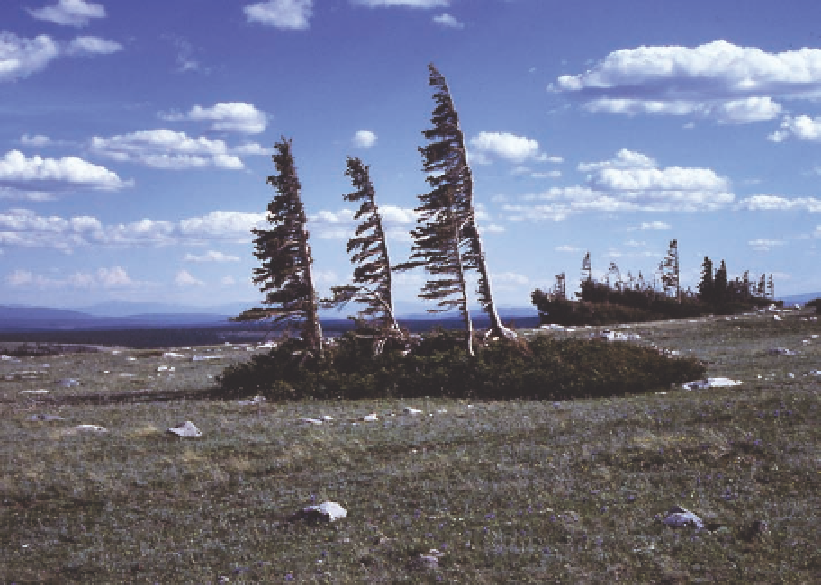Geoscience Reference
In-Depth Information
Fig. 14.3. trees at upper treeline often have the krummholz
growth form, with dense lower branches that are protected
from the wind by snow during the winter. Upper branches
develop only on the leeward side of the trunk because of
abrasion from blowing ice and snow. Most krummholz trees
are engelmann spruce and subalpine fir, though whitebark
pine can have a similar growth form in northwestern
Wyoming. common plants in the adjacent alpine fellfield
include alpine avens, alpine bistort, alpine sagewort, and spike
trisetum. Photo taken on Libby Flats in the Medicine Bow
Mountains. elevation 10,800 feet.
that understanding the elevation of treeline depends as
much on where tree seedlings are able to become estab-
often the shrubby tree islands are initiated in slight
depressions, where water is more readily available and
seedling establishment is more likely to occur. eventu-
ally, after many years, the lower branches of the saplings
are pressed to the ground by heavy snow and begin to
produce roots. this process, known as
layering,
contrib-
utes to the horizontal dimensions of the krummholz
mat, creating the impression many years later of sev-
are one or a few clones developed from one or a few
seedlings.
once established, the patches of krummholz have
several interesting features. First, they move very slowly
downwind, perhaps an inch or so each year—the result
of abrasion on the upwind side and layering on the
the krummholz is changed, with more soil organic
matter and nitrogen under the trees. For a time, some
alpine plants may do better on soils left behind after
the trees have passed. However, wind scouring of the
organic-rich soil most likely resumes after the protec-
tion of windward branches is lost, leaving the tundra
with a soil similar to that prior to the establishment of
the first tree seedling.
the islands of krummholz influence plant distribu-
tion in other ways, primarily through drifting snow
during the winter, and the temperature under snow
is warmer than on the soil surface of snow-free tun-
dra. Downslope from the drifted snow, water is more
readily available during what would often be a dry
growing season, contributing to the amount of plant
growth that can occur there. commonly found under
the shrubby trees are such plants as dwarf huckleberry,
mountain gooseberry, and other species associated
with the less severe environment of subalpine forests
and meadows.

Search WWH ::

Custom Search